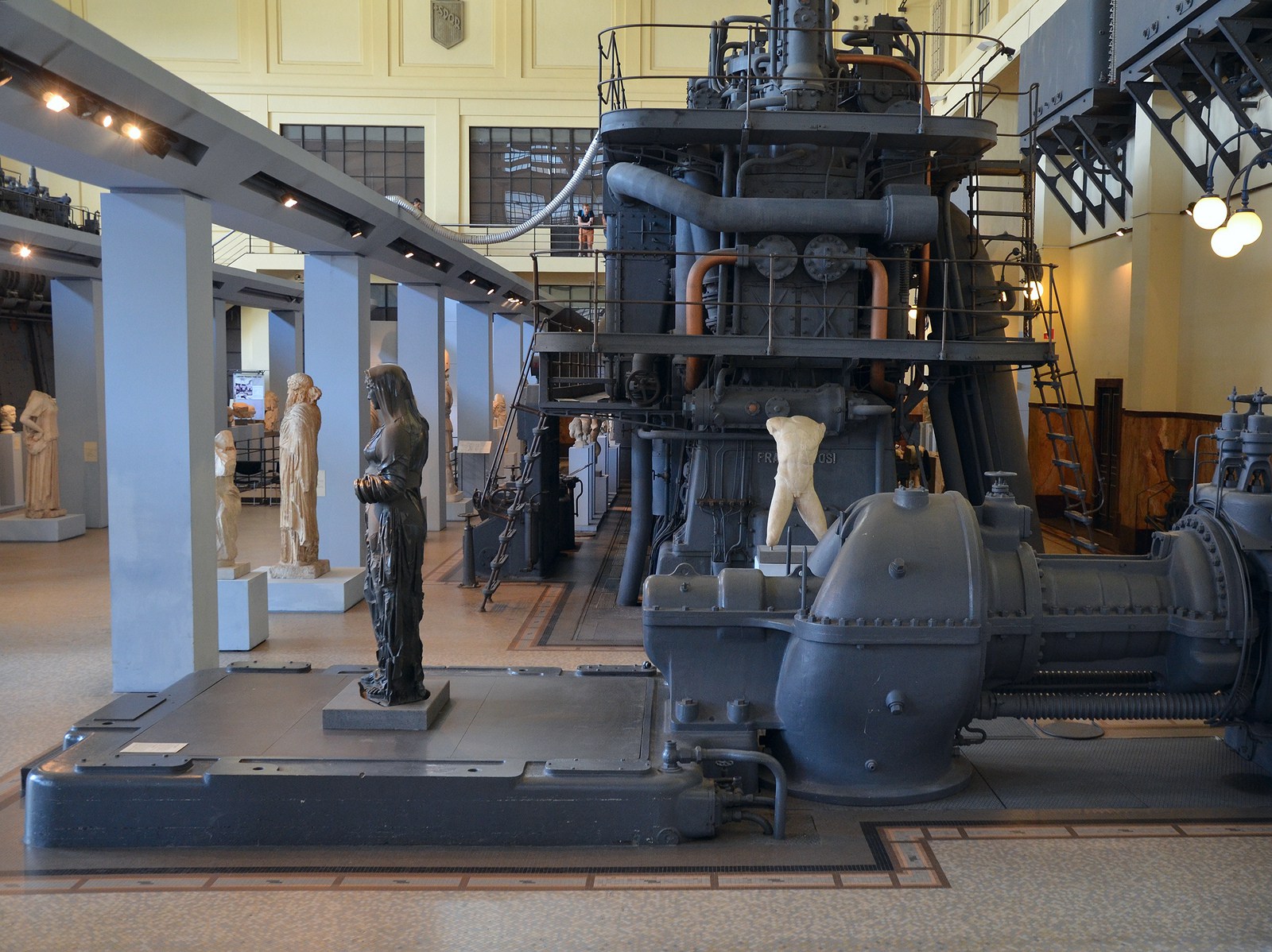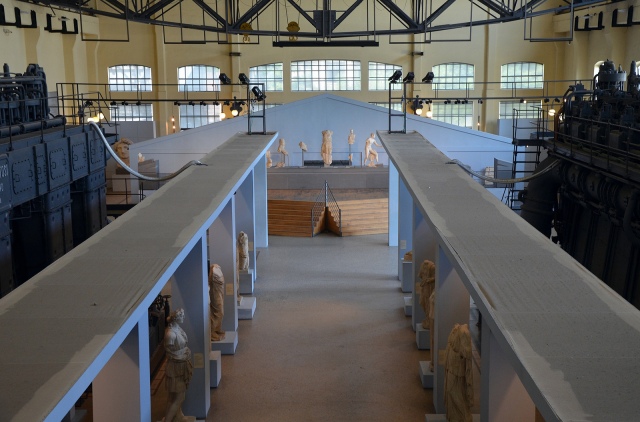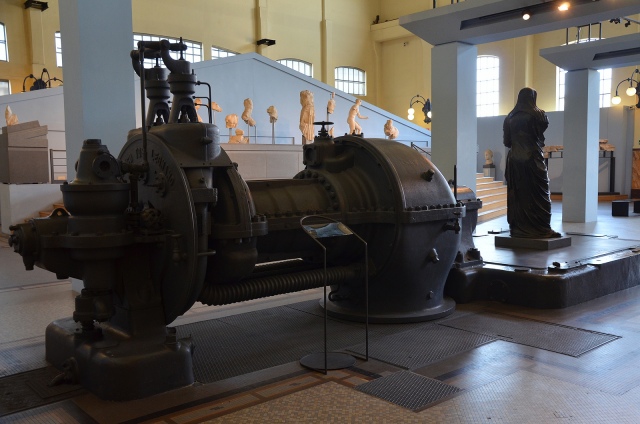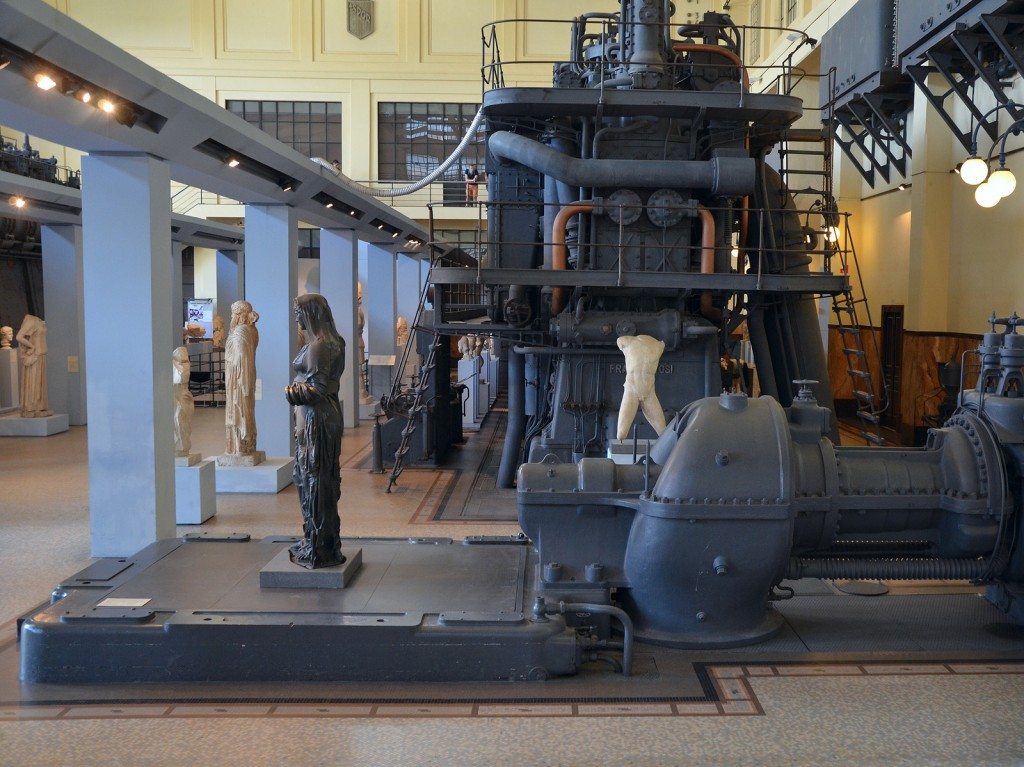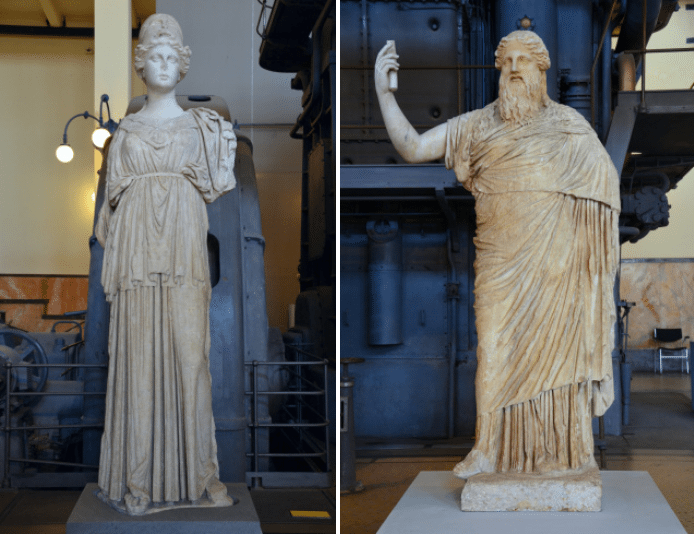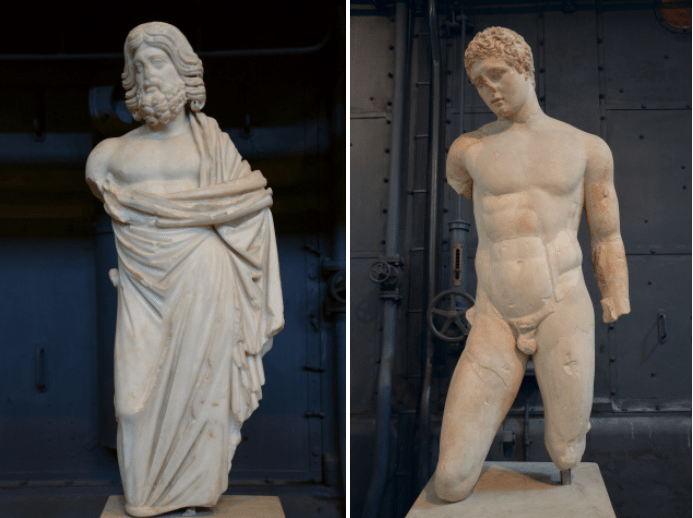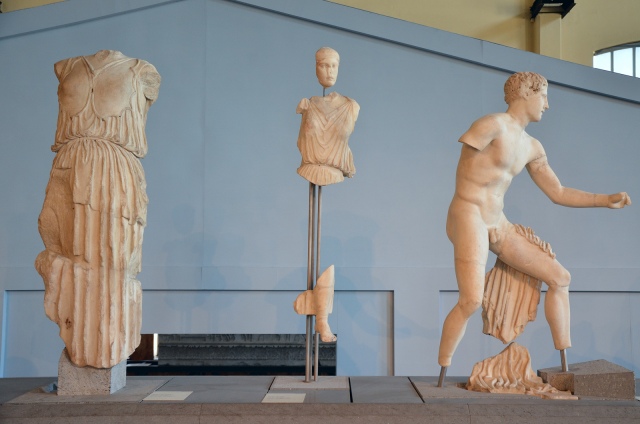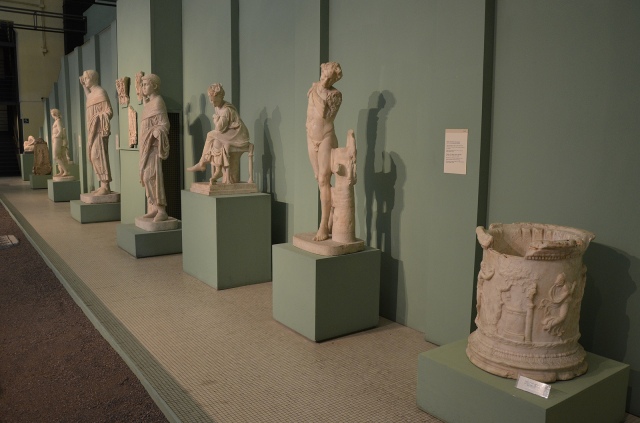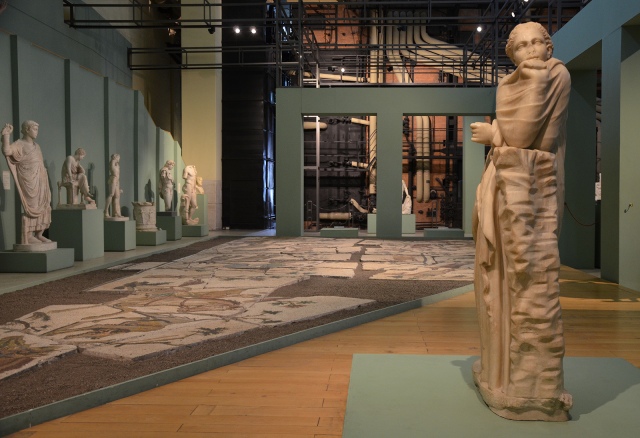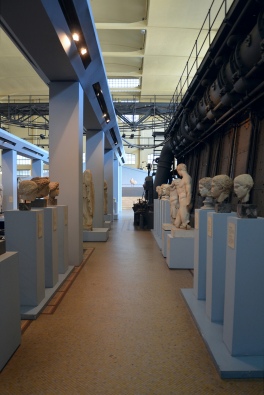During a recent trip to Rome, I paid a long overdue visit to the Centrale Montemartini, an annexe of the Capitoline Museums located on the Via Ostiense just beyond Porta San Paolo.
Centrale Montemartini was Rome’s first electrical power station when it opened in 1912, and was later converted into a museum of ancient Roman art in the late 1990s. Like the Tate Modern in London, Centrale Montemartini places art in an industrial setting but, unlike the Tate, the imposing machinery has not been moved out. The engines’ grey mass provides a stark contrast to the white marble and offers a unique backdrop for classical art.
Centrale Montemartini has a collection of about four hundred sculptures, reliefs and mosaics dating from the Republican to the late Imperial era. The works of art, exhibited in chronological order, are part of an outstanding collection of classical sculptures from the excavations carried out in Rome between the end of the 19th century and the beginning of the 20th. The masterpieces were moved here during the reorganisation of the Capitoline Museums in 1997 to create space in the Palazzo dei Conservatori and the Museo Nuovo. The Montemartini power plant’s outstanding space made it possible to display monumental sculptures and reconstructions of architectural structures, such as the pediment of the Temple of Apollo Sosianus and the huge mosaic of hunting scenes from Santa Bibiana.
The museum is divided into four areas. The atrium on the ground floor has information panels that illustrate the history of the building. They also examine the characteristics of the main machines used inside the plant.
Column Room
The next room is the Column Room which displays a rich collection from the Republican era. Exhibited here are architectural decorations, a group of sculptures in Peperino tufa (a grey volcanic stone from the Albani Hills), beautiful mosaics with seascapes and a series of portraits dating to the 1st century BCE.

Pediment with Triton, 1st century BCE, from a funerary building on the Via Salaria, Centrale Montemartini, Rome. Photo © Carole Raddato.

Statue of Orpheus charming the animals in Peperino, 2nd century BCE, from the Via Tiburtina, Via Tiburtina Centrale Montemartini, Rome. Photo © Carole Raddato.

Mosaic with maritime scenes, from the Via Panisperna in Rome, late 2nd – early 1st century BCE, it once decorated the pool of a Roman bath, Centrale Montemartini, Rome. Photo © Carole Raddato.
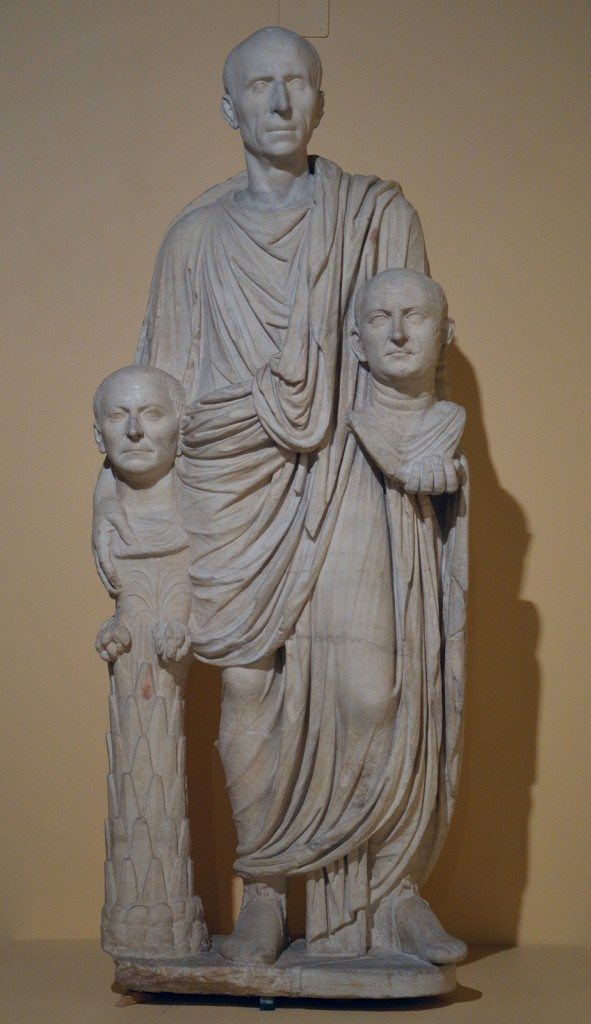
The so-called Togatus Barberini group, a funerary statue depicting a Roman senator holding the imagines (effigies) of deceased ancestors, late 1st century BCE, head (not original) middle 1st century BCE
Centrale Montemartini, Rome. Photo © Carole Raddato.

Portrait of Marcus Vispanius Agrippa, Augustus and of a a political personality (possibly Mark Antony), Centrale Montemartini, Rome. Photo © Carole Raddato.
Engine Room
On the second floor, the Engine Room is the largest and most impressive room. Here, a series of exquisite marble statues and rare Greek originals are arranged around two huge diesel engines and a steam turbine.
The Engine Room also houses two sculptures of exceptional artistic quality that were found in 1885 on the Caelian Hill during excavations. The two fragmented pieces were found inside a late-antique wall where they were reused as material construction. The restorers of the 19th century reassembled the two statues. The first one is a statue in basanite of Agrippina the Younger represented in the act of praying. The head is a moulded copy of the statue on display in the Ny Carsberg Glyptotek in Copenhagen (see image here). The second statue, made in dark grey marble (bigio antico), is known as the Victory of the Symmachi (an aristocratic family of the late Roman Empire). It is considered to be a work dating to the late Republican, most probably representing a dancing woman like the one from Perge in the Antalya Museum (see image here).

Basanite statue of Agrippina the Younger depicted as a priestess, discovered during the excavations in 1885 of the military hospital that was build over the villa Casali, 1st century CE & Statue in made in dark grey marble (bigio antico) known as the Victory of the Symmachi, probably representing a dancing woman, Centrale Montemartini, Rome. Photo © Carole Raddato.
A whole gallery of Imperial portraits as well as splendid Roman copies of Greek originals come from a private residence of the 1st century CE and restored in the 2nd and 3rd century CE. The house was brought to light during excavations for the creation of the Via dei Fori Imperiali.

Part of a statue of Antinous depicted as Apollo, 130-138 CE, from the Via dei Fori Imperiali Centrale Montemartini, Rome. Photo © Carole Raddato.

Portrait of Lucilla, daughter of Marcus Aurelius and Faustia / Head of Silvanus crowned with pine / Head of Apollo crowned with a laurel wreath, Centrale Montemartini, Rome. Photo © Carole Raddato.
Temple of Apollo Sosiano Reconstruction
Occupying the other end of the room is a reconstruction of the pediment of the Temple of Apollo Sosiano, a temple dedicated to Apollo in the Campus Martius, next to the Theatre of Marcellus. The marble sculptures are rare Greek originals (dated to c. 450 – 425 BCE), brought to Rome in the Augustan period to decorate the temple whose remains are still visible today (see images here). The temple’s main pediment was decorated with sculptures narrating the battle between the Greeks and the Amazons (Amazonomachy) in which the figures of Hercules, Theseus, Athena and Nike take centre stage.
The cella’s interior walls were decorated with a frieze representing a triumphal procession interpreted as the representation of Octavian’s triple triumph held in 29 BCE and celebrating the Dalmatians wars, the Battle of Actium and the victory over Egypt.
The Boiler Room, named after the huge steam boiler dominating the room, is home to a number of beautiful statues and decorative sculptures that once adorned the gardens of sumptuous imperial residences (Horti Sallustiani, Horti Liciniani, Horti Lamiani, Horti Caesaris). Funerary monuments from the Ostiense Necropolis are also on display in this room.
Among the highlights here are a sculpture group depicting a Satyr and a Nymph, a head of Priapus, a wounded Niobid, a statue of a seated girl and another one of the muse Polyhymnia as well as an exquisite statue in red marble of Marsyas and a large mosaic of a hunting scene.

Seated girl / Group with Satyr and a Nymph / Head of Priapus, Centrale Montemartini, Rome. Photo © Carole Raddato.
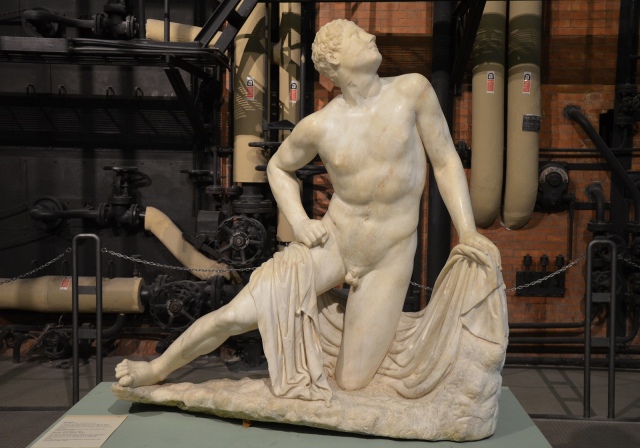
Statue of one of Niobe’s sons who were killed by Artemis and Apollo, Roman copy after an early Hellenistic statue belonging to a sculptural group, from the Horti of Caesar in Trastevere Centrale Montemartini, Rome. Photo © Carole Raddato.
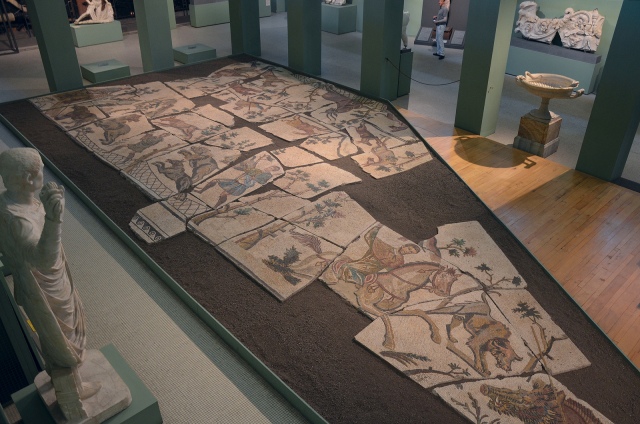
Mosaic with hunting scenes, from the Horti Liciniani, early 4th century CE Centrale Montemartini, Rome. Photo © Carole Raddato.
Centrale Montemartini is definitely one of Rome’s most striking exhibition space. It offers a unique museum experience and it is often so empty that you will likely have the place to yourself.
The museum is located on the Via Ostiense, 106. Take the Metro to Garbatella, cross over the tracks and walk through a car park to the Via Ostiense. You will see the museum across the Via on your left. You can also walk from the Pyramid Metro Station down the Via Ostiense.
Opening hours:
Tuesday-Sunday: 9.00 – 19.00;
24 and 31 December: 9.00 – 14.00;
Last admission 1/2 hour before closing time.
Regular Fees:
Adults € 7,50
Concessions € 6,50
Roman Citizens only (by showing a valid ID):
Adults € 6,50
Concessions € 5,50
Capitolini Card (Capitoline Museums + Centrale Montemartini – valid 7 days):
Adults € 16,00
Concessions € 14,00
Roman Citizens only (by showing a valid ID):
Adults € 15,00
Concessions € 13,00
Website: http://en.centralemontemartini.org/
Originally published at Following Hadrian, republished with permission.
